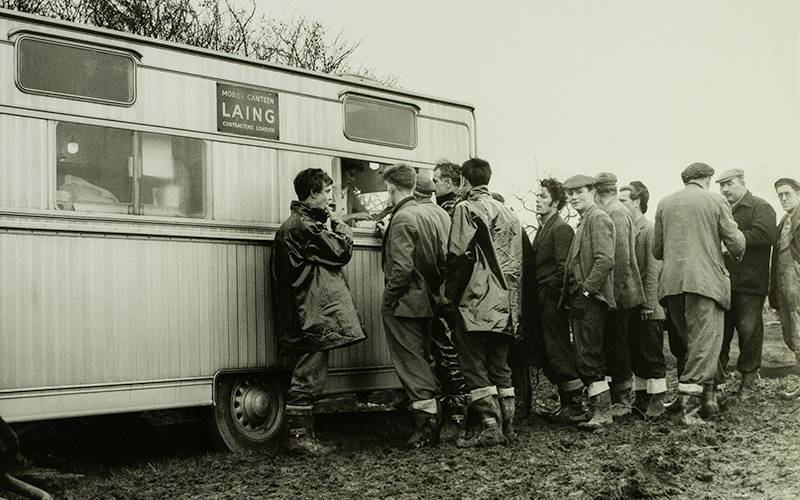 Research
Research

Subject
Picturing Construction, Constructing Identities: The Photographic Archive of John Laing & Son Ltd
First and second supervisors
Abstract
This research is centred on an investigation of John Laing & Son’s history through its archive of more than 230,000 photographs held by Historic England. The company was founded in 1848 and through much of the twentieth century was one of the prime construction companies in the UK. It would use staff photographers and external photographers to generate a compelling visual history of its work and the people and processes which were at the core of this enterprise. Historic England’s report on the collection notes that there are few photographic collections created by a single company held elsewhere which have such scope and breadth and this richness offers an opportunity to engage with the material from multiple angles.
In this thesis it will be argued that photography was instrumental in the process of creating and performing both an externally focused corporate identity and an internal identity which sought to bring a cohesive “way of working” and code of behaviour to Laing’s workforce. Furthermore, it will be argued that these processes of identity formation were foundational to the commercial success of the business and through that success enabled the company to play a significant part in the construction of national identity through the production of the built environment.
More specifically the archive will be interrogated with a view to answering two questions. The first of these is to look at how it represents a business and how that representation can be considered as a form of identity, both externally and internally. The use of particular photographic tropes, styles and technologies will be considered through critical engagement with the archive as a whole and in more detail with specific exemplars of image types to determine how corporate photographic practices evolved to meet the varying needs of the organisation and in doing so developed identities.
It will be argued that the archive demonstrates linkages between image, identity and memory which allows greater comprehension of how the creation of imagery and its subsequent retention allowed Laing to present itself to different audiences, both internal and external, over an historical period. Answering this question will require discussion of the nature of archives generally and photographic archives more specifically, looking at accessioning and attribution, management of collections and the idea of an archive constantly being refreshed though its use in many contexts, from advertising a corporate heritage to academic research such as this thesis.
The second question looks in more detail at how the archive documents and represents the buildings and infrastructure that Laing helped create. It is possible to make an argument that Laing was instrumental in the creation of a “modern Britain” following the cessation of hostilities in World War II based on its involvement with projects such as the construction of the M1 motorway, described as ‘the most extended civil operation since the railways were built’, the rebuilding of Coventry Cathedral, consecrated in 1962 and the first commercial nuclear power station at Berkeley opened in 1962.
These monumental designs sit alongside a wealth of domestic architecture from housing estates to shopping parades and industrial and trading estates, often using innovative building techniques and materials and the archive will be interrogated to understand how the company documented these works and how such documentation supports an architectural history of this period. Part of this investigation will look at changes in representation, considering how the photographic image changed in terms of formal characteristics and desired outcomes over the lifetime of the archive.
Biography
Tony Presland is a part-time doctoral student on the Architectural & Urban History & Theory MPhil/PhD at The Bartlett. He has undergraduate degrees in Chemistry (Westfield College, University of London – 1984) and Humanities (Open University – 2008), and Master’s Degrees in User Interface Design (London Metropolitan University – 1993) and Art History (Open University – 2013). Most recently he completed a Master’s Degree in the History of Design, at Kellogg College, University of Oxford with a dissertation on Pan American Airways and their “Clipper” flying boats: http://www.thegoodbuilder.net/2018/02/designing-pan-am.html (2017).
Tony currently works as Head of IMT for Historic England in Swindon: https://www.linkedin.com/in/tony-presland-profile/
Image: Nuclear Power Station, Berkeley. Mobile Canteen for service of tea. 8th January 1957. ©Historic England 2019 – The John Laing Collection No. 48730.
 Close
Close

